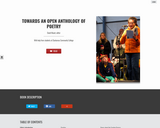
A selection of poems, arranged by theme, with a list of poetic terms.
- Subject:
- English Language Arts
- Material Type:
- Textbook
- Provider:
- OpenOregon
- Author:
- David Mount
- Date Added:
- 02/16/2018

A selection of poems, arranged by theme, with a list of poetic terms.

The attached Lesson Plan is designed for Grade 3 English Language Arts students. Students will understand and use 3rd grade level vocabulary, use creative thinking skills to write a short story, proofread and edit their own work, and publish a final copy of their written work. It is expected that this Lesson Plan will take students about 120 minutes to complete.

In order to show the world that the completed Brooklyn Bridge was strong enough, P.T. Barnum and his twenty-one elephants parade across to prove to everyone that the bridge is safe. The resource includes a lesson plan/book card, a design challenge, and copy of a design thinking journal that provide guidance on using the book to inspire students' curiosity for design thinking. Maker Challenge: Build a bridge between two tables or chairs that will hold one elephant per student in the class. Each student designs their own “elephant” using materials in the classroom.
A document is included in the resources folder that lists the complete standards-alignment for this book activity.
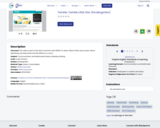
This video is part of the Learn and Grow with WHRO TV series. Watch Patty Larson teach about identifying rhyming words and the letters d, w, and y.
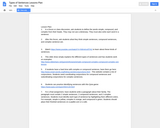
Through forums, a video, and a slide show, students will learn how to recognize and write simple sentences, compound sentences, and complex sentence.

K Types of Weather Anchor Chart CKLA
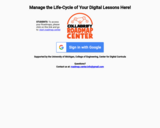
UMCDC 3rd Grade MAISA "Writing True Stories" Unit 1 (20-21)
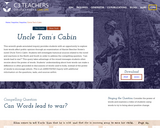
This seventh grade annotated inquiry provides students with an opportunity to explore how words affect public opinion through an examination of Harriet Beecher Stowe’s novel Uncle Tom’s Cabin. Students will investigate historical sources related to the novel and reactions in the North and South in order to address the compelling question, “Can words lead to war?” This query takes advantage of the mixed messages students often receive about the power of words. Students’ understanding about how words can make a difference is often grounded in discussions of words used to bully, instead of the power of words to encourage reform. This is an ANNOTATED inquiry with additional information on the questions, tasks, and sources within.
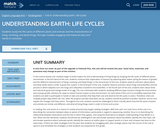
In this science-based unit, students begin to build respect for and understanding of living things by studying the life cycles of different plants and animals. In the first bend of the unit, students continue their exploration of seasons by exploring what makes spring the season of growth and the different characteristics of living, nonliving, and dead things. In the second part of the unit, students observe and learn about plants and what seeds need in order to grow into a plant. In the third part of the unit, students observe and learn about frogs and butterflies and the process in which tadpoles turn into frogs and caterpillars transform into butterflies. In the fourth part of the unit, students learn about birds and how birds grow and change inside of an egg. The unit culminates with students studying different ways humans change the environment and coming up with solutions for ways to reduce human impact on the environment. For each bend of the unit it is incredibly important that students are able to participate in hands-on labs and activities that help them see and observe the life cycles in action. Therefore, there are multiple project days within the unit. After the projects and labs have been set up, students should be pushed to predict, observe, record, and explain the changes that they notice. Throughout the unit, students should be challenged to think critically about how the life cycles of plants and animals are similar and different, and what all living things need in order to thrive and survive.
In reading, this unit serves as a chance to review all previously taught reading strategies. With that said, one main focus of the unit is on describing the connection between ideas or pieces of information, particularly in regard to sequencing. Another focus is on describing the relationship between illustrations and the text in which they appear, and using the illustrations to deepen understanding of key details in a text. When the text demands, students should also be challenged to ask and answer questions about key details, identify the main topic, ask and answer questions about unknown words, identify the reasons an author gives to support points in a text, and compare two texts on the same topic. If there are other strategies from the year that students are struggling with, plan strategic places over the course of the unit to spiral in and remediate the strategies so that students are prepared for first grade.
In writing, the main focus of this unit is on ensuring that all students are scoring a 3 or a 4 on the reading response rubric. Therefore, targeted whole-group and small-group mini-lessons should be planned based on student needs.

This list of children's books recommends nonfiction titles that supplement basic information found in lessons and activities of this themed issue of the online magazine Beyond Weather and the Water Cycle. The books are grouped by topic -- water, weather and climate, and atmosphere. Each book is described by its content, reading level, and possible uses in the classroom. Covers are pictured. The online magazine is produced for elementary school teachers and is structured around the essential principles of climate sciences and climate literacy.
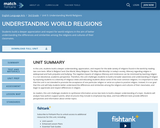
In this unit, students build a deeper understanding, appreciation, and respect for the wide variety of religions found in the world by reading two core texts: What Is Religion? and One World, Many Religions: The Ways We Worship. In today’s society, illiteracy regarding religion is widespread and fuels prejudice and bullying. The negative impacts of religious illiteracy and intolerance can be minimized by teaching religion in a non-devotional, academic perspective. Therefore, this unit challenges students to build a broader awareness and understanding of religion by exposing students to a diversity of religious views and educating students about some of the most common religions. It is important to note that this unit is not intended to promote the acceptance of one particular religion or serve as a place to practice religion. Instead, it is our goal that this unit will help students better understand the differences and similarities among the religions and cultures of their classmates, and begin to appreciate and respect differences in religion.
As readers, this unit challenges students to synthesize information across two texts to build a deeper understanding of a topic. Students will analyze how authors support points, what structures they include to emphasize key ideas, and how different texts provide different perspectives and information about similar topics.
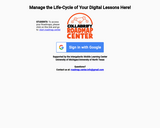
Students will understand the differences between physical and personality traits of a character.
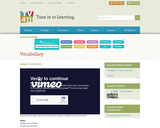
This website has a fun short video and an interactive practice activity to teach and assess common suffixes. It is geared toward adults but would be appropriate for secondary as well.
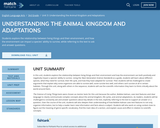
In this unit, students explore the relationship between living things and their environment and how the environment can both positively and negatively impact a species’ ability to survive. Using the Next Generation Science Standards as a guide, students will learn about different species, what they need for survival, their life cycle, and how they have adapted for survival. Then students will be challenged to create arguments that explain why some organisms are able to survive well, some survive less well, and others can’t survive at all in certain habitats. Through this unit, along with others in the sequence, students will use the scientific information they learn to think critically about the world around them.
The Science of Living Things texts were chosen as mentor texts for this unit because the author, Bobbie Kalman, uses text features and clear language to clearly communicate complex concepts about the animal kingdom, life cycles, and animal adaptations. As readers, students will be challenged to constantly ask and answer questions about key details in the text, explicitly referring to the text to support an answer or a question. Over the course of the unit, students will also deepen their understanding of how Bobbie Kalman uses text features to not only organize information, but to help a reader learn new information and facts about a subject. Students will also work on using context clues to figure out the meaning of genre-specific vocabulary, find the main idea of a section, and explain cause and effect in relation to scientific concepts.
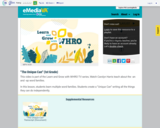
This video is part of the Learn and Grow with WHRO TV series. Watch Carolyn Harris teach about the -an and -ap word families.
In this lesson, students learn multiple word families. Students create a "Unique Can" writing all the things they can do independently.
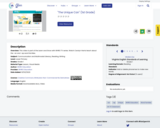
This video is part of the Learn and Grow with WHRO TV series. Watch Carolyn Harris teach about the -an and -ap word families.
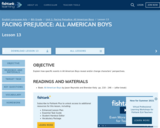
Explain how specific events in All American Boys reveal and/or change characters’ perspectives.
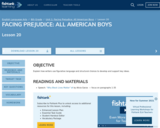
Explain how writers use figurative language and structural choices to develop and support key ideas.
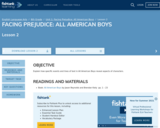
Explain how specific events and lines of text in All American Boys reveal aspects of characters.
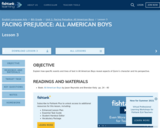
Explain how specific events and lines of text in All American Boys reveal aspects of Quinn’s character and his perspective.